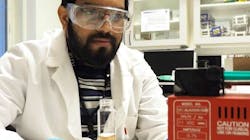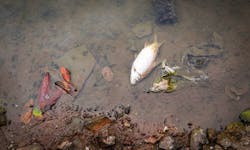Resembles sand
The artificial DNA is encapsulated in a silicon-based layer combined with iron oxide. The resulting particles resemble sand and are magnetic. This way, the particles can be extracted from the stream using a magnet. This method is convenient in water with lots of foreign elements.
"The tracers aren't that expensive to make," says Bandyopadhyay, "and only tiny quantities are needed, which increases the marketing opportunities."
The particles can be made in different shapes and sizes, which in turn can make them easier to separate from each other. The encapsulation also prevents the DNA from coming into contact with the environment.
Bandyopadhyay emphasizes that just because this is DNA doesn't mean it's a living material at all.
The process doesn't need large quantities of the tracers either. For example, putting a few milliliters into a river is enough to find the tracers when you analyze 1 to 10 microliters of a water sample from further downstream.
SOURCE: Norwegian University of Science and Technology





